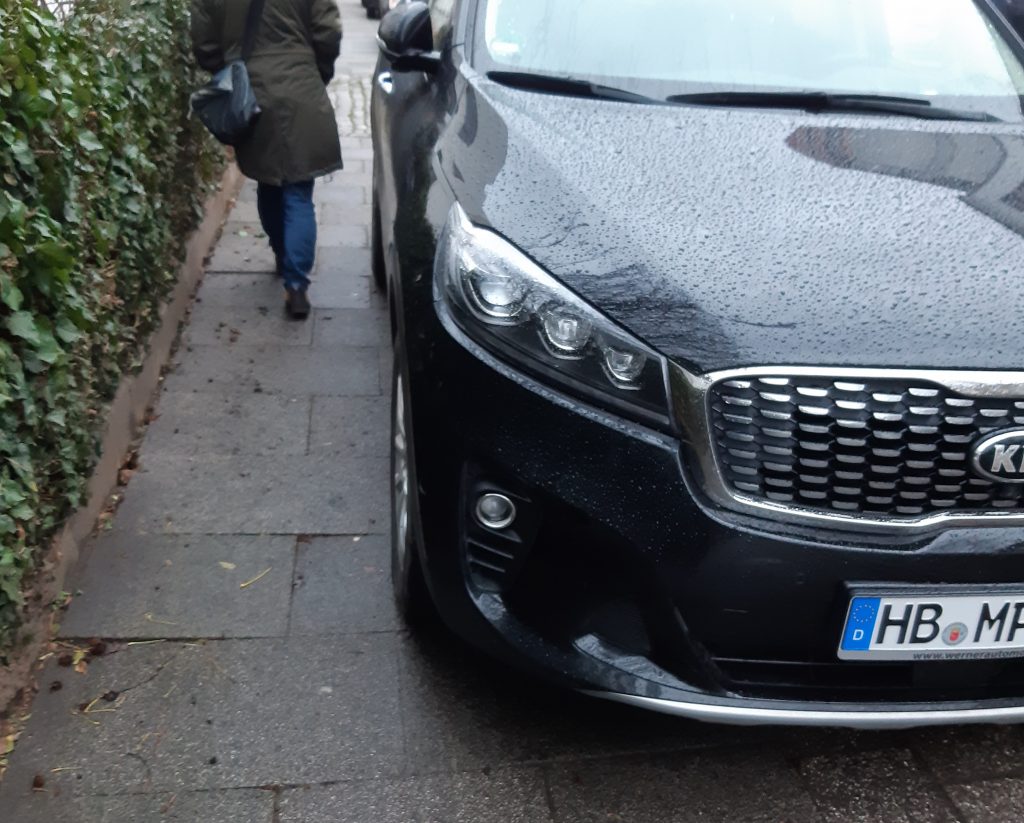There is hardly an issue in Bremen that is as heated as the parking of cars in residential areas. Questions like these arise: Who does resident parking help? Is parking on pavements permissible? And if so, under what conditions? What rights do pedestrians have? The debate is characterised by assumptions and unsubstantiated claims on the part of both proponents and opponents of a sustainable traffic turnaround. Reason enough to take a look at the binding provisions of road and traffic law in a series of articles on Bremenize. Continue reading Pavement Parking and Accessibility
Category Archives: Zu Fuß gehen
Accessibility in Bremen Traffic (Part A: Road Law)
Part 1 : The legal Situation on Bremen’s Streets
Public space is always a scarce commodity in cities that have grown over time without central planning. Ever more, and ever bigger, vehicles are competing for the same amount of space. At the same time, private automobiles are continuing to push other modes of transport out of this public space. Currently, political as well as legal resistance to this situation is growing, supported by environmental organisations such as BUND, NABU, citizens‘ and neighbourhood initiatives, and transport organisations such as ADFC, VCD; Fuss e.V., Forum for Transportation Transformation („Forum Verkehrswende“), Autofreier Stadttraum („Auto Free City Space/City Dreams“) and Coalition for Transportation Transformation (“Bündnis Verkehrswende“). In addition, many citizens have filed suit against the city-state for its lack of action against vehicles parked illegally on sidewalks. This problem is further complicated by electric scooters parked on sidewalks In the summer of 2020, a visually impaired man was seriously injured in Bremen when he tripped over an electric scooter. He has filed suit against the city-state for not protecting him from injury.
Parking on the sidewalk in Mindener Strasse in Peterswerder in Bremen (foto: Olaf Dilling)
Continue reading Accessibility in Bremen Traffic (Part A: Road Law)
After Corona – The future of public space
The shock of Corona in recent history is only comparable to the attacks of September 11, 2001. In both cases new rules and state powers were established almost overnight. This time it is not a question of fighting terrorism, but of preventing epidemics. But this time, too, almost all areas of public and private life are affected. The Corona crisis will have a particular impact on the future design and use of public space. Because of the need to protect against infection, it is likely that even after the current phase of rigid restrictions, distancing rules will have to be observed for the foreseeable future.
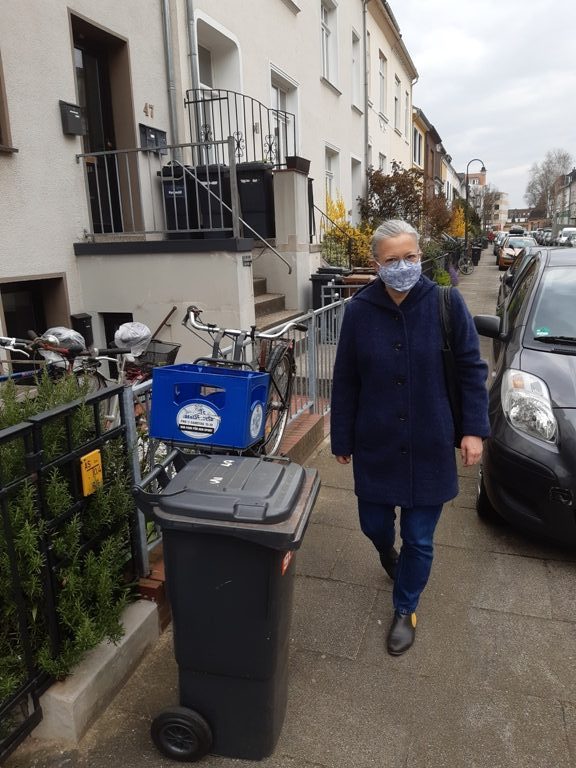
But it’s still in our hands. We can either allow further restrictions to be placed on public space or, by redistributing it, enable equal participation. This could go hand in hand with a transport policy that puts people at the centre, and at the same time takes better account of air pollution control and climate protection. Pedestrian traffic can be promoted by planning sufficient space on pavements. The capacities of public transport and railways must be increased to minimise the risk of infection. Car lanes can be reserved for bicycles to ensure safety and distance. Continue reading After Corona – The future of public space
Foot traffic check in Bremen
At present, the share of foot traffic in Bremen is at its lowest level (21%), less is not possible. And this is because the conditions for foot traffic in Bremen are very poor.
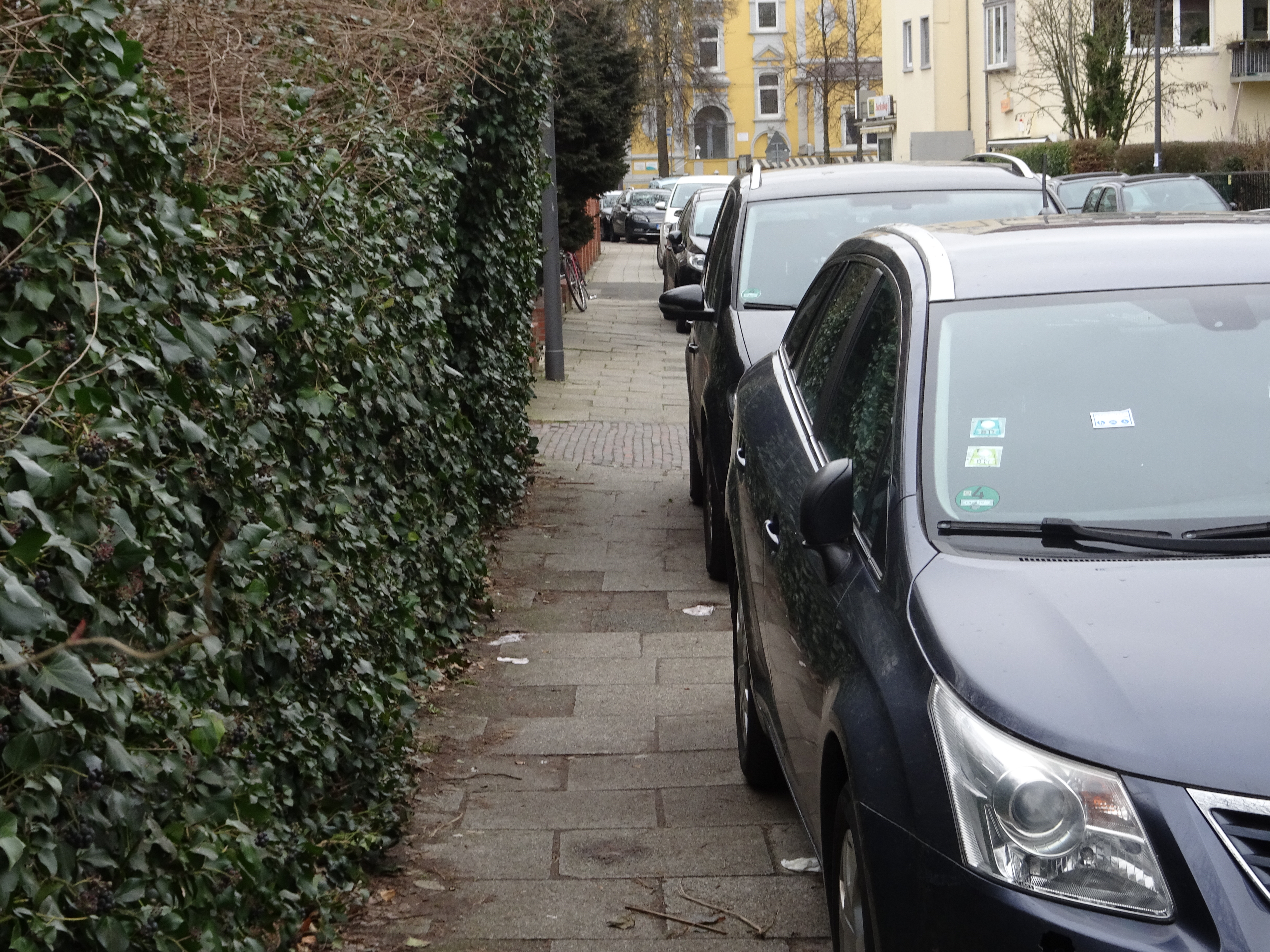
This is ridiculous
In order to draw attention to the numerous shortcomings to which everyone has become accustomed, the FUSS e.V. Bremen local group has carried out a foot traffic check in a district near the city centre, in the Neustadt.
The “discovered” deficiencies can be found everywhere in the city, and only 12 typical deficiencies were discussed during the foot traffic check. It is important for FUSS e.V. to create a general awareness of the fact that the mobility areas for people on foot or in wheelchairs are systematically poor or unusable and that there is an urgent need for action. Continue reading Foot traffic check in Bremen
Parking Day: Or how to civilise a traffic hell
The Friedrich-Ebert-Strasse in the Neustadt district of Bremen is heavily congested, or better said: a four-lane traffic hell. People who live on this road are exposed to unbearable levels of noise and air pollution every day. Because this road – 30 m wide, then 60 m wide before it turns into the Wilhelm-Kaisen-Bridge – offers generous space for motorized traffic. Pedestrians and cyclists, on the other hand, have to share the narrow (4 m) sidewalk, and can hardly ever cross the road safely.
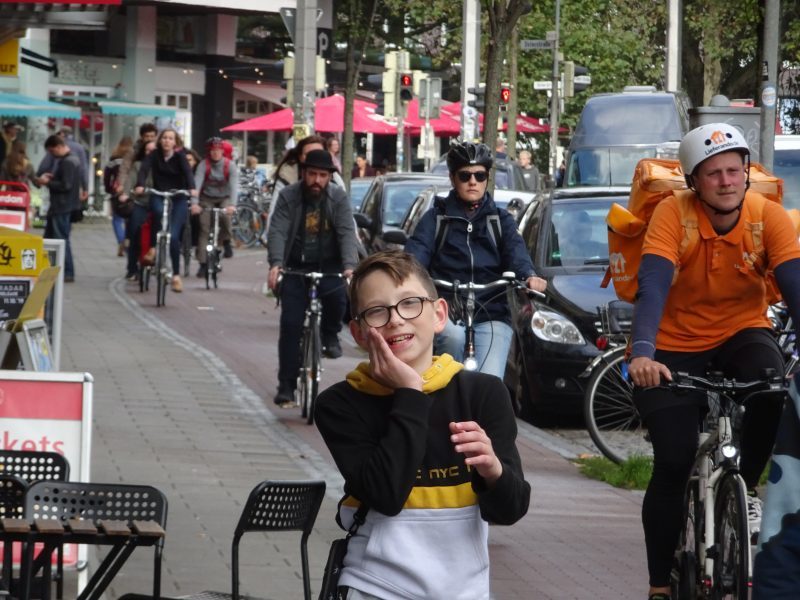
Not much space for everyday cyclists, Foto: Wolfgang Köhler-Naumann
Should this be the case? Is this appropriate for a modern urban environment?
We believe it is not. We wanted to show that there is another way to organize public space. Continue reading Parking Day: Or how to civilise a traffic hell
“Geht-Doch-Manifesto” – Pro pedestrian traffic in Bremen
(The following is taken from the original text)
Lots of dosh for car traffic – hardly anything for foot and bicycle
According to a study by the University of Kassel, car traffic in Bremen receives a subsidy of 156 euros per inhabitant per year, public transport 115 euros, cycling 9.3 euros and walking 16 euros.
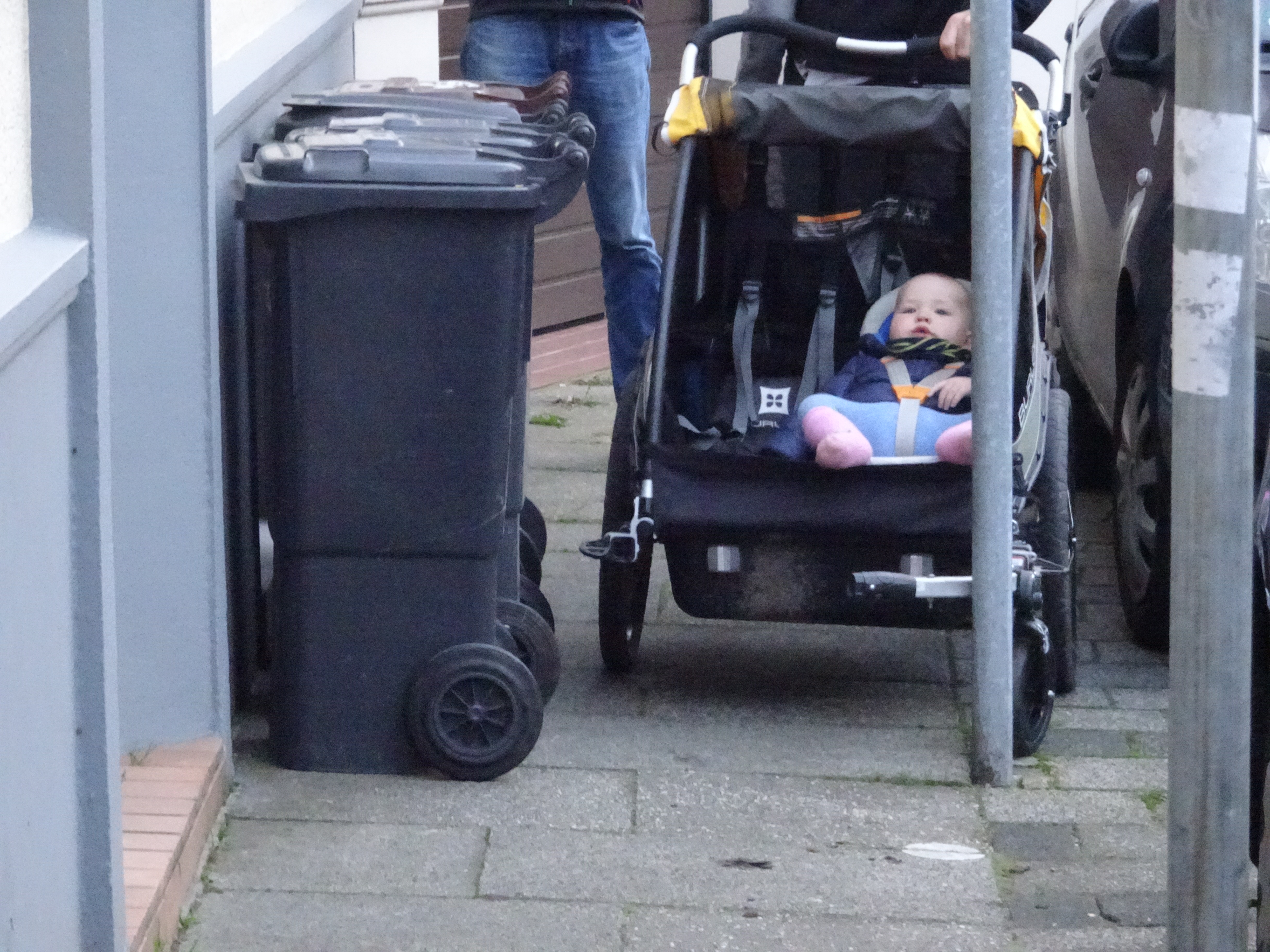
Pavements in Bremen, does it have to be like that?
Although Bremen does somewhat better than other municipalities, it must be said that car traffic is heavily subsidised. Continue reading “Geht-Doch-Manifesto” – Pro pedestrian traffic in Bremen
